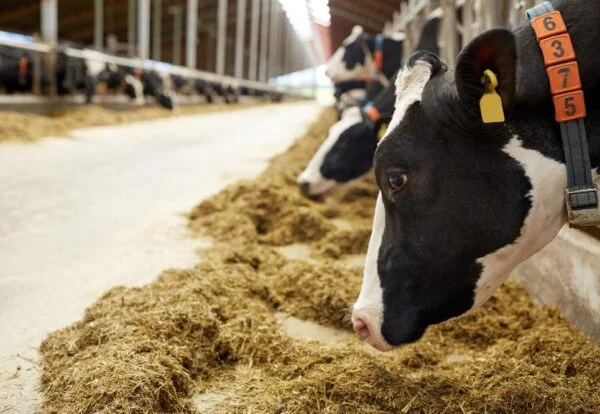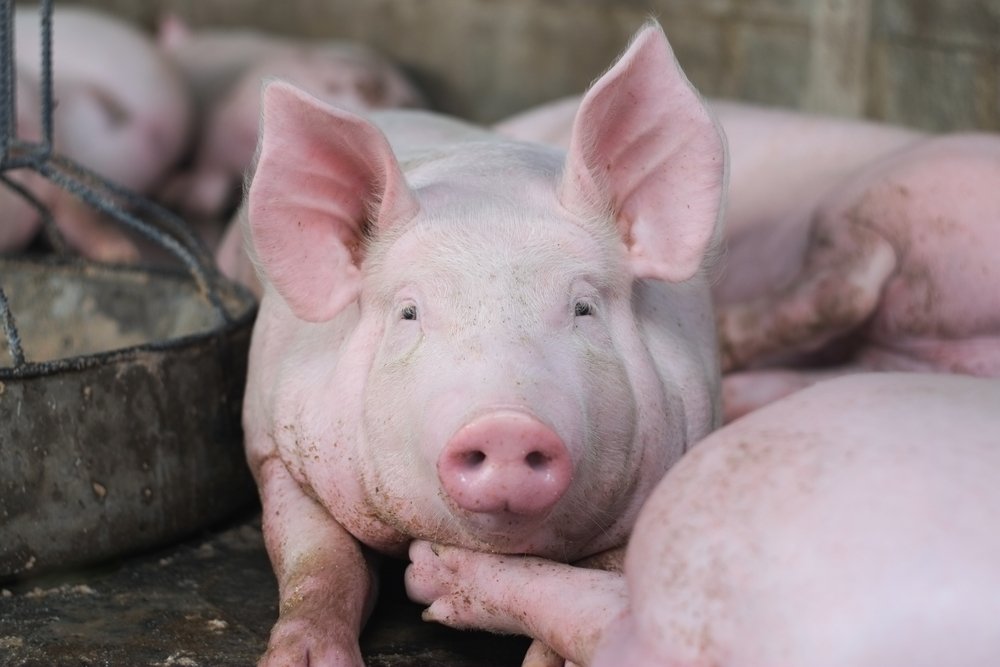In modern dairy farming, managing costs while maintaining cow health and productivity is crucial. One of the strategies that has emerged from recent scientific research is feeding dairy cows less protein. While protein has long been considered a vital nutrient in dairy diets, reducing the amount of protein can yield numerous advantages. This concept may seem counterintuitive at first, but let’s explore the many benefits of lowering protein intake in dairy cow diets.
1. Cost Savings Through Protein Reduction
Protein is one of the most expensive components of dairy cow feed. Farmers invest a significant amount of money into ensuring that their cows receive an adequate supply of protein to support milk production and growth. However, scientific studies have revealed that dairy cows do not require as much protein as previously thought to maintain optimal milk production levels. By reducing protein content in their diets, farmers can save a substantial amount on feed costs.
When considering the scale of dairy operations, even a small reduction in protein intake can translate to significant savings over time. For example, a 5% reduction in protein feed content across a large herd could lead to thousands of dollars in annual savings. This cost-cutting measure can free up resources that can be reinvested in other areas of the farm, such as improving infrastructure or upgrading equipment.
2. Environmental Impact: Reducing Nitrogen Excretion
One of the most pressing environmental concerns in dairy farming is the issue of nitrogen excretion. When cows are fed more protein than they can effectively utilize, the excess protein is excreted primarily in the form of nitrogen, through both urine and manure. Excess nitrogen, when not properly managed, can leach into water sources, contributing to groundwater contamination and eutrophication of rivers and lakes.
By lowering the protein content in dairy cow diets, farmers can significantly reduce the amount of nitrogen their cows excrete. This not only minimizes the risk of environmental pollution but also aligns with increasing regulations aimed at reducing nitrogen emissions from agriculture. Furthermore, by adopting more eco-friendly feeding practices, farmers can enhance their reputation as sustainable producers and potentially gain access to environmentally-conscious markets.
3. Improved Cow Health and Welfare
Feeding cows too much protein can lead to a range of health issues. One common problem is ketosis, a metabolic disorder that occurs when cows use body fat as an energy source instead of carbohydrates. This often happens when cows are fed an unbalanced diet, particularly one with excess protein. Ketosis can lead to decreased milk production, weight loss, and other health complications.
Another issue caused by excessive protein intake is acidosis, which occurs when the rumen (the cow’s stomach) becomes too acidic. This happens when cows consume more fermentable proteins than their digestive systems can handle. Acidosis can result in a loss of appetite, reduced milk production, and severe digestive distress. Both of these conditions can have long-term effects on cow health and productivity, leading to higher veterinary costs and lower farm profitability.
By carefully balancing the protein content in dairy cow diets, farmers can prevent these disorders, promoting better overall health in their herd. Healthier cows are more productive cows, and they require less medical intervention, which further reduces costs.
4. Efficient Milk Production Without Excess Protein
One of the myths in dairy farming is that higher protein intake directly leads to increased milk production. However, research has consistently shown that there is no direct correlation between feeding cows more protein and producing more milk. In fact, cows can maintain their milk production levels with a balanced diet that contains less protein but sufficient energy, fiber, vitamins, and minerals.
By optimizing feed formulation, dairy farmers can achieve a more efficient milk production process. Lowering protein levels in feed does not compromise the cow’s ability to produce milk, and in many cases, cows produce the same amount of milk with a reduced-protein diet. This is an important consideration for farmers looking to reduce feed costs without sacrificing production efficiency.
5. Enhanced Nutrient Utilization and Digestive Health
Another advantage of reducing protein in dairy diets is the improvement in nutrient utilization. Cows that are fed excessive amounts of protein often do not absorb all the nutrients efficiently, leading to wasted resources. When protein levels are carefully managed, cows are able to absorb and utilize nutrients more effectively, contributing to better overall health and milk production.
Moreover, reducing protein intake can improve the balance of the cow’s gut microbiota. High protein diets can sometimes cause imbalances in the digestive system, leading to conditions such as ruminal acidosis or digestive upset. A diet that is lower in protein and balanced with adequate fiber and energy can promote a healthy gut environment, enhancing digestion and nutrient absorption.
6. Reduced Environmental Footprint
In addition to reducing nitrogen excretion, feeding less protein to dairy cows can also help reduce the overall environmental footprint of dairy farming. Protein-rich feedstuffs often require significant resources to produce, including water, land, and energy. By lowering the demand for protein in dairy cow diets, farmers contribute to the conservation of these valuable resources.
Moreover, producing less nitrogen waste means that less land and labor are required to manage manure. Manure management is a significant part of dairy farming, and reducing its volume and nitrogen content can lower the labor costs and infrastructure required to store, treat, and dispose of manure safely.
7. Lower Methane Emissions
Recent studies have suggested that reducing protein intake in ruminant diets could also help lower methane emissions. Methane is a potent greenhouse gas produced by cows during digestion, and excessive protein can contribute to higher levels of methane production. By adjusting feed formulations to lower protein levels, farmers may be able to reduce methane emissions from their herds, contributing to climate change mitigation efforts.
This potential environmental benefit, combined with cost savings and improved cow health, presents a strong case for adopting reduced-protein feeding strategies in dairy farming. In fact, reducing methane emissions could become an essential part of sustainability certifications and eco-labels, further enhancing the marketability of dairy products from farms that adopt these practices.
8. Optimizing Feed Efficiency Through Precision Nutrition
Precision nutrition is becoming a key trend in dairy farming, allowing farmers to tailor their feed formulations to the specific needs of their herd. By using data-driven approaches, such as feed analysis and cow monitoring technologies, farmers can precisely determine the amount of protein and other nutrients that their cows require at various stages of production.
This approach minimizes waste and ensures that cows are receiving the optimal balance of nutrients for their health and productivity. By incorporating precision nutrition techniques, farmers can further refine the practice of feeding less protein, maximizing both economic and environmental benefits.
Conclusion: A Win-Win for Farmers and the Environment
Feeding less protein to dairy cows presents a compelling opportunity for farmers to reduce costs, improve cow health, and lower their environmental impact. With scientific research backing the benefits of this approach, more dairy farmers are adopting reduced-protein diets for their herds. The key lies in balancing the protein content with other essential nutrients to ensure that cows remain healthy and productive.
By doing so, farmers can achieve sustainable, cost-effective dairy farming practices that benefit not only their bottom line but also the environment. As the dairy industry continues to evolve, feeding less protein may become a standard practice for progressive, eco-conscious farms worldwide.










